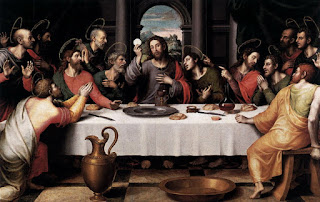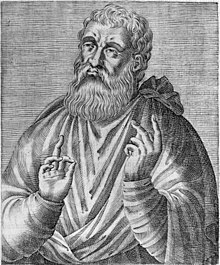A Savior for all Seasons
For many centuries people strived and died to embrace Him. Today, they often struggle as hard to quit Him. All the time, His image keeps popping up like that of some genial, persistent old boyfriend.
Just how does one see the world through the prism of Jesus Christ?
In this popular 1985 series of dissertations, Jaroslav Pelikan examined the many different ways Western civilization has represented and rated Christ from the days of Roman-occupied Israel to the middle of the Cold War. Pelikan details just how varied the face of Christ has been depending on those doing the viewing.
It really has changed a lot.
“That very cross on which he was derided, he has now imprinted on the brows of kings,” was how St. Augustine put it in the fourth century, when Christianity was just beginning to take over Europe. Might made the strongest impression in one era; beauty or compassion did the same in others.
Ultimately Christ served as a kind of Rorschach test for each epoch, which Pelikan notes with a broad and diverse sampling of thinkers in every era, as well as some images. From the Enlightenment, for example, he includes atheists like David Hume as well as acknowledged skeptics like Thomas Jefferson and unorthodox believers like Isaac Newton to make the case for Christ’s continued importance in their day.
Near the end of his life, Benjamin Franklin weighed in:
As to Jesus of Nazareth, my opinion of whom you particularly desire, I think the system of morals and religion, as he left them to us, the best the world ever saw or is likely to see…I have, with most of the present dissenters in England, some doubts as to his divinity, tho’ it is a question I do not dogmatize upon, having never studied it, and think it needless to busy myself with it now, when I expect soon an opportunity of knowing the truth with less trouble. I see no harm, however, in its being believed, if that belief has the good consequence, as probably it has, of making his doctrines more respected and better observed.
One wishes for Pelikan, who passed away in 2006, that opportunity Franklin spoke of. For many decades he took in the vastness of organized religion as a dedicated ecumenist, born into Lutheranism and dying Eastern Orthodox, Certainly he was steeped in the materials of faith, of which he makes ample use here.
I just wish the result was easier to digest. As was the case with his companion volume, Mary Through The Centuries, Pelikan’s sometimes dry, often dense style proves a struggle to get through, even in shortish chapters, or perhaps because of them.
Part of the problem is one of diminishing returns. The early story of Christ’s influence on civilization was deep and profound, and also complex. Here, in succeeding chapters, Pelikan takes in Jesus’ connection to Judaism, His role as a marker of time (and anticipated end times), and the way Christianity intersected with pagan thinkers like Socrates. “What therefore you worship as unknown, this I proclaim to you,” St. Paul declared to a Greco-Roman audience ready for change.
But as time goes on, Jesus becomes less definer of the times, and more just another influencer. Pelikan’s thesis, while never weak, feels more forced as it goes along. Instead of recognizing Christ’s power over the earth weakening in the face of increased disbelief, Pelikan puts forth a counter-argument where Christ’s life offers an example and an inspiration even for people who don’t believe in Him.
Pelikan presents Mahatma Gandhi as such an example:
His philosophy of what Erik Erikson has aptly termed “militant non-violence” was a blending of elements from traditional Hinduism, which he had initially rejected but on which he eventually looked more favorably, and elements from Christianity, or more specifically from the teachings of Jesus.
For those who find more of value in the template Christ set than in His teachings, Pelikan is on firmer ground. That is because the earlier period of Christianity offers a more rooted Messiah far more interesting and engaging for the purposes of this book.
He began, Pelikan notes, in the tradition of the Jewish rabbi: answering questions with another question; relaying lessons in the form of parables; and on the surface, in harmony with the traditions of the Old Testament, which spoke in a Mosaic manner about a form of deliverance that had a distinctly localized hue. As His message began to spread, and arguments over His nature blew up, so did a sense of greater purpose.
Christ, Pelikan notes, became to early Christian thinkers the “Logos,” not just the instigator but what he calls “the goal of the cosmos:”
Jesus was, then, not only the image of divinity, but the image of humanity as it had originally been intended to be and as through him it could now become; he was in this sense the “ideal man.”
Such an ideal may not have been practical; it certainly was inspiring. For centuries, artists would make Christ the primary subject of their canvasses, busts, and sheet music. Even this came with no small amount of controversy, as many leaders in the Roman Catholic and Eastern Orthodox churches saw representation as blasphemous, either because it trivialized Christ into something material and hence subordinate, or because it elevated His human qualities at the expense of the divine.
Pelikan notes at the outset Christ’s three celebrated qualities: the Good, the True, and the Beautiful. Goodness was innate, and Truth clear enough in the eyes of the faithful. Beautiful took the most work, and would involve not only artists, but monks and mystics as well:
Whether sentimental or sublime, Christ-mysticism has repeatedly been the supreme instance of how, within the classic triad of the Good, the True, and the Beautiful, it has been the Beautiful that has been able to portray him the most effectively – and the most seductively.
Pelikan is careful to write of Jesus for an academic audience. He doesn’t capitalize pronouns. When giving years, he employs the newer, post-Christian form of “C. E.” instead of “A. D.”
Occasionally his studied secularism slips a bit:
Nevertheless, the religious, moral, and political relations between Christians and Jews do run like a red line through much of the history of culture. Even as we heed the warning against rashly judging the quick and the dead, since ultimately there is another Judge who will do so and who will judge us as well, we who live in the twentieth century do have a unique responsibility to be aware of that red line, above all as we study the history of the images of Jesus through the centuries.
Still, Pelikan is at pains to observe the pieties of his secular audience, decrying not only anti-Semitism but the crimes of colonialism and slavery done in Christ’s name. Serving two such diametrically opposite masters, God and the cultural elite of the 1980s, strains Pelikan’s ability at times to serve up Christ in a palatable, popular manner. But he scores his points with deft eloquence.
Pelikan’s ability to draw from a myriad of cultural traditions and points of view make Jesus Through The Centuries an engaging read, even when plowing through centuries of intellectual evolution in a single paragraph. It needs to be said again, that while I am a fan of brevity, there were times when explaining ideas, or at least pausing to translate them, was something I’d wished Pelikan had indulged in here.
Pelikan’s strongest chapter details the rise of monastic life as a means of emulating Christ, a trend which culminated in St. Francis of Assisi. Fascinatingly for me, monks were not an exclusively Christian phenomenon, as both pagans and Jews had their own monastic orders. But Christ offered a uniquely apt model for monks. “If any man would come after me, let him deny himself and take up his cross and follow me,” were His words as recorded in Mark 8:34.
Pelikan likens the embrace of Francis and others to that regimen as similar to that of trained athletes working themselves in peak condition:
The sources that survive compel us to the conclusion that his must have been an almost magical presence. It was this that drew followers from various regions and from many different walks of life. They came because of the magnetic pull of Francis, and they came because of the authority of the Gospel of Jesus – and these two reasons were one in their eyes.
Other times, Pelikan seems content to name-check important cultural figures and note a connection to Christ, as if that were enough. “Bach was the Fifth Evangelist,” he declares, apparently because the composer produced a lot of sacred music and it makes for a snappy one-liner.
At times Pelikan allows an anti-intellectual case was made by Christians, pushing back against the Platonic philosophy and iconography being retooled in His name. “After possessing Christ Jesus, we want no curious disputation, no inquiries after enjoying the gospel!” declared Tertullian, an early and important Christian writer. “What does Athens have to do with Jerusalem?”
I
found myself sympathizing with Tertullian’s impatience as Pelikan earnestly and
doggedly connected seemingly every major cultural figure to Christ, whether
they liked Him or not. However multi-faceted his case for Christ, it felt after
a while like subtraction by adding.





No comments:
Post a Comment